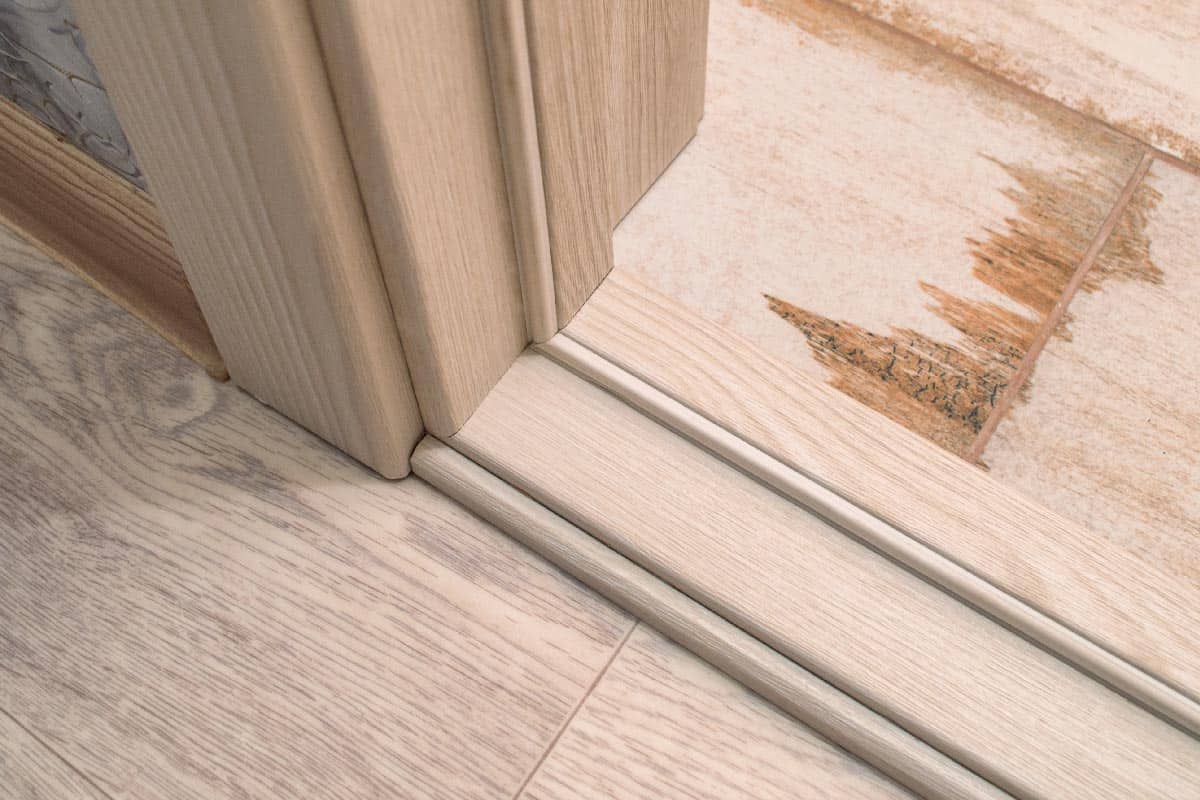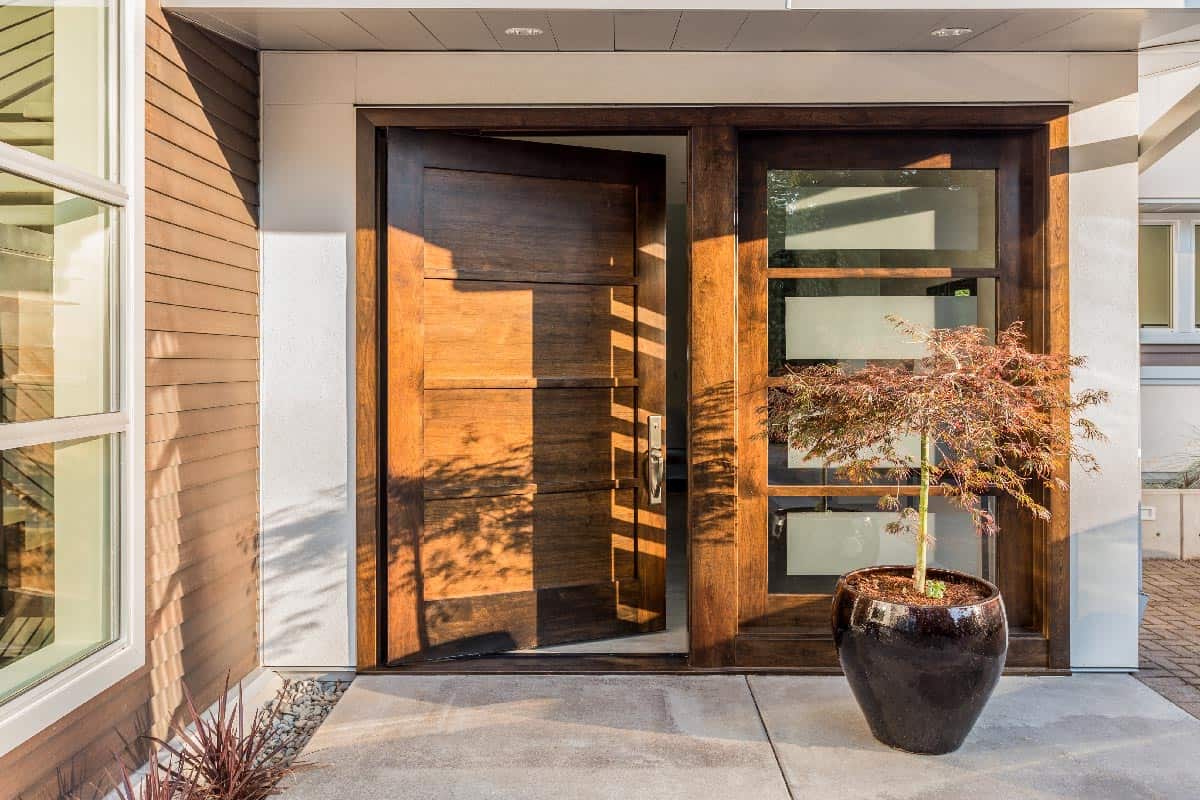Not only do door thresholds protects your door, but it is also a form of decor. It is very important to have a threshold installed on your door but if you notice your door threshold is too high, don't worry about that. We have done proper research to provide you with the information on the next step to take.
If your door threshold is too high, turn the screws counterclockwise to lower the threshold. Although a correct fit against the door is most crucial, the top of the threshold should ideally be level.
To ensure that water doesn't enter your home, fitting the appropriate door threshold is very important. To know more about the door threshold, keep reading as we would be providing more detailed information below.

What is a Door Threshold?
The threshold is the horizontal metal or wood strip that is at the bottom of an entry door frame. The energy efficiency of a house or building is significantly influenced by a threshold. In the doorway, it serves several additional functions.
A door threshold's main function is to act as a seal underneath the door, shielding it from the cold and heat in the winter and summer, respectively. Rainwater that might otherwise find a way into the entry area is likewise kept out the inside by the threshold.

A threshold also serves to seal out incoming cold and hot air as well as rain and snow. It also serves as a barrier to stop the interior air from escaping. As you avoid having to constantly replace the hot or cold air that would be lost behind a door without a threshold, you can save cooling costs.
A threshold also serves as a barrier to keep out undesired pests like insects and other small vermin who would otherwise have access to your home. Without the threshold, the space between the bottom of the door and the floor is considerably wider, providing a passageway for snakes and other tiny rodents.
How Do You Fix a High Door Threshold?
Thresholds are made of either wood, aluminum, or brass. They are made in different length sizes to match the opening of a door. The threshold material can be cut on-site for doors of a different size or ordered to a specific size to fit in properly to what is desired.
Most thresholds are made of wood or aluminum, while some are brass or stainless steel. Not all door thresholds can be changed. If yours is, take a peek at the threshold's highest point and look for a few brass screws or snap-out caps that are about the size of a dime.
If there are caps, take them off; underneath, there should be brass screws. If a threshold is too high, it has to be leveled.
How Do You Change a Threshold In a Door?
A threshold for an outdoor door is subjected to a lot of wear and tear from weather and foot traffic. You can replace your threshold if it's in bad shape.
With a rubber gasket to keep the cold out, thresholds are available in both metal and wood. A sill is typically present beneath the threshold of exterior doors. The sill most likely has rot as well if the threshold does.
To drain water away from the home, one side of the sill is leveled. You must cut it before removing it since it fits awkwardly under jambs, between wall studs, and between the casing and jambs.
A new internal threshold may also be necessary if the old one is ugly or if new flooring is being installed on one side of the entryway. The threshold of an inside door lies on the ground with no sill beneath it.
A new threshold and sill installation will take two to three hours. Make sure you are familiar with the fundamentals of carpentry before you start by covering your floors with a drop cloth.
What is The Minimum Height of Thresholds on a Doorway?
Thresholds can range in height from 1/4 inch to 1 inch or even more. The criteria of the American regulatory bodies may limit the threshold's height to 1/2 inches and its gradual climb to no more than 1/4 inches vertically.
Can I Reduce The Gap Under My Door?
Door gaps, particularly on outside doors, can cause significant energy loss. They let cooler air in during the winter and cool air out while your air conditioner is working during the summer.
There are cost-effective and do-it-yourself options to close the gap, though, if you don't want to raise the floor beneath the door entirely you have options
Screw a Sweep on the Door
The sweep will successfully close the space under the door when this is done on an outside door within the house. There are various sorts, including genuine bristle sweeps that dangle below doors to prevent gaps and rubberized sweeps that bulge slightly to fill gaps.
Utilizing a marker, note the width of the door and transfer that measurement to a door sweep. Wearing safety glasses, trim the sweep to the desired length using a hacksaw or jigsaw.
Place the sweep at the bottom of the door, with the edge positioned to block the opening. On the actual door, make markings via the pre-drilled connection holes.
Add a Slide-on or Wrap Around Door Sweep
Add a slide-on or wrap-around door sweep to the project. They slide onto the bottom of the door or bend to wrap around the bottom edge of the door, making them the simplest to install. Although you won't need to remove the door to achieve this, it must be left open while installation is being done.
Take the door's width into account while sizing the slide-on door sweep. Put on a set of safety glasses and use a jigsaw or hacksaw to cut the sweep to the specified length. Open the door completely, then slide on the door sweep at the bottom.
Use a wrap-around door sweep if there is a sizable gap beneath the door. They have lengthy movable sides that can be raised and lowered along the door's width. Drill pilot holes through the sides and install screws when the sweep's bottom has filled the door gap.
Install The Door Threshold

These floor-mounted gap sealers have a rubbery gasket that extends upward and makes touch with the bottom of the door. They need the greatest work, yet they blend in well and don't appear to be an afterthought.
Take a floor measurement of the space between the door frames. Transferring this measurement to the threshold, donning safety goggles, and using a hacksaw or jigsaw to cut it to this length. Drilling pilot holes for the installation screws after positioning the threshold between the frame members.
To make this activity easier, mounting holes in the threshold will have been pre-drilled at the factory. The mounting screws should be fully inserted and tightened. The gasket must be slid or pushed into the channels on the threshold to completely seal the gap beneath the door.
Do Threshold Doors Come in Different Heights?

Although this might vary from brand to brand, most doors typically have a height of around 1 1/4 inches from the bottom of the door frame to the bottom of the door.
Most frequently, doors are placed on the subfloor. You can occasionally prepare ahead and set the door higher so that once you place a rug in front of the door it won't drag on the rug if you know there will be a wood floor or 1/2 inch cement board and 1/2 inch tile.
Do Interior Doors Need Thresholds?

Interior door thresholds, also known as door bars, are necessary for all modern houses and commercial buildings. They can make the place safer as well as enhance the aesthetics of your interior space. Your home can become more energy-efficient with the help of interior door thresholds, which will reduce your gas and heating costs.
Interior door thresholds are a crucial component of your home's aesthetic while being a seemingly minor detail. There are numerous types of interior door thresholds, but they all have the same function: they close the opening between the bottom of the door and the floor to create a soft transition.
Selecting a Threshold for Interior

You can select a door threshold that goes well with the interior decor and flooring of your property. For instance, you might want to choose a wooden threshold if you're linking your kitchen to your living room and both rooms have wooden floors so they blend in.
The majority of interior door thresholds are composed of wood, PVC, or metal, primarily brass, stainless steel, bronze, and aluminum. Wood is excellent for traditional designs, metals are advantageous for their endurance and sleek appearance, and UPVC designs are sometimes less expensive.
In Summary
Door thresholds are placed under the entries of doors and they serve as barriers to prevent pests or cold weather from the house. If a threshold doesn't fulfill its function well, it can be changed or enhanced because it comes in different sizes to fit into the size of doors.



